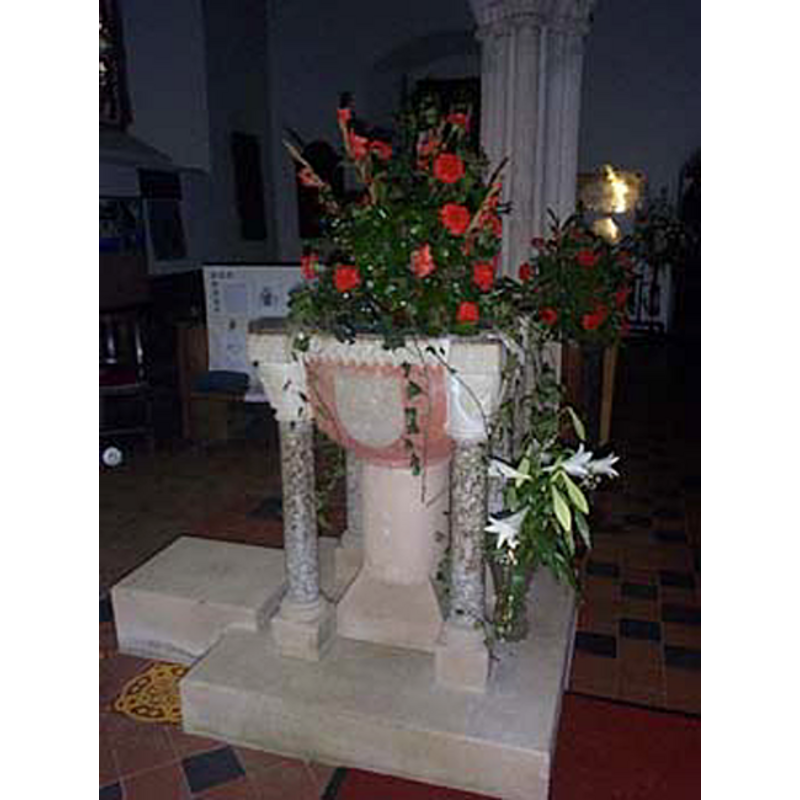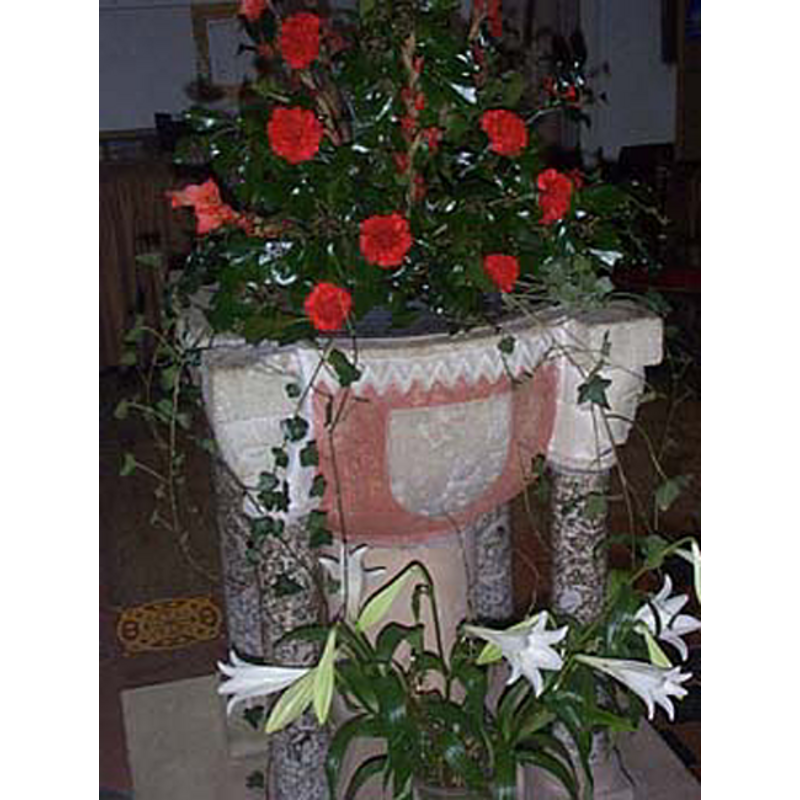St. Mawgan / Mawgan-in-Pydar / Mawgan-in-Pyder / Saint Mawgan

Image copyright © Steve Beazley, 2003
Permission to reproduce (standing permit)
Results: 4 records
B01: symbol - shield - blank - 4
BBU01: design element - motifs - zigzag
BH01: human figure - head - 4
INFORMATION
FontID: 10644MAW
Object Type: Baptismal Font1
Church/Chapel: Parish Church of St. Mawgan
Church Patron Saints: St. Mawgan [aka Maucan, Maugan, Maugabus]
Country Name: England
Location: Cornwall, South West
Directions to Site: Located off the A39, 13 km SW of Wadebridge
Font Location in Church: Inside the church
Century and Period: 12th - 13th century / 15th - 16th century, Late Norman? / Late Medieval?
Workshop/Group/Artisan: Bodmin type (variant) / heraldic font / Cornish font
Cognate Fonts: St. Enoder, St. Wenn, St. Columb Minor, Crantock, Feock, Ladock, etc.
Credit and Acknowledgements: We are grateful to Steve Beazley, of RootsWeb.com, for the photographs of this font.
Font Notes:
Click to view
Noted in Lysons (1806-1833) as one of a group of remarkable fonts in this county. This font, however, does not belong to the group of earlier Cornish fonts, but to a later series of fonts made in the general shape of the early Bormin, Roche, etc. types. The shape is still the cauldron basin with four outer heads which serve as capitals of the colonnettes that 'suspend' it at 90-degree angles, with a thicker shaft as main support in the centre; there is a band of zigzag motif around the upper basin side, between the colonnettes, and each side of the basin is decorated with a large blank shield. Described in Cox (1912): "Font, of Pentewan stone, is a comparatively plain example of late Norm[an], type of Bodmin and St. Austell, shafts below angle-heads are new, rim has zigzag ornament, and there are 4 uncharged shields on bowl." Noted in Pevsner (1970): "Font. On five supports, with circular bowl. The corners with faces, the four sides with a zigzag top border and shields below (cf. St Wen, Crantock, St Columb Minor)." Pevsner does not suggest a date for the font and, if Lysons had not noted the font, one might assume that it was late Victorian by looking at it. Noted in Rees (2003) as Norman.
MEDIUM AND MEASUREMENTS
Material: stone
Font Shape: round (with heads) (mounted)
Basin Interior Shape: round
Basin Exterior Shape: round
REFERENCES
Cox, John Charles, Cornwall, London: George Allen & Company, 1912
Lysons, Daniel, Magna Britannia, being a concise topographical account of the several counties of Great Britain, London: Printed for T. Cadell and W. Davies, 1806-1822
Pevsner, Nikolaus, Cornwall, Harmondsworth: Penguin Books, 1970
Rees, Elizabeth, An essential guide to Celtic sites and their saints, London; New York: Burns & Oates, 2003
